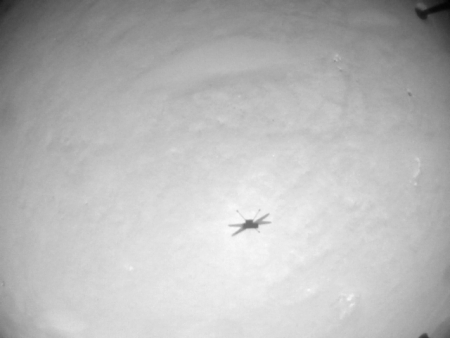Today’s blacklisted American: American Geophysical Union rejects candidates for awards because they are white

Eagerly discriminated against by the
American Geophysical Union
“Segregation today, segregation tomorrow, segregation forever!” An awards committee of the American Geophysical Union, assigned to give fellowships to scientists of note, decided to reject all the candidates this year because they happened to be white.
Five of the nation’s top ice scientists found themselves in a conundrum. They’d been tasked with a formidable job: reviewing candidates for the American Geophysical Union’s fellows program, the most prestigious award given by the world’s largest earth and space science society. But when the group looked at its list of candidates, all nominated by peers, it spotted a problem.
Every nominee on the list was a white man.
….“That was kind of a bit of a showstopper for me,” said Helen Fricker, a glaciologist at Scripps Institution of Oceanography and one of the five committee members. Fricker and her colleagues — Jeff Dozier, Sinead Farrell, Bob Hawley, Don Perovich and Michele Koppes — represented the AGU’s cryosphere section, comprising scientists focused on the Earth’s snow and ice. The group was just one of about two dozen different committees, all reviewing their own lists of candidates.
The homogeneous pool of nominees didn’t sit right. … So the committee members made an uncomfortable decision. They declined to recommend any nominees at all.
Let me make this very clear: They bluntly rejected the nominees for only one reason: their race. If this isn’t outright bigotry and racism I do not know what is. And if you don’t believe me, you should read the public letter these committee members wrote explaining their decision. In it they say:
» Read more

Eagerly discriminated against by the
American Geophysical Union
“Segregation today, segregation tomorrow, segregation forever!” An awards committee of the American Geophysical Union, assigned to give fellowships to scientists of note, decided to reject all the candidates this year because they happened to be white.
Five of the nation’s top ice scientists found themselves in a conundrum. They’d been tasked with a formidable job: reviewing candidates for the American Geophysical Union’s fellows program, the most prestigious award given by the world’s largest earth and space science society. But when the group looked at its list of candidates, all nominated by peers, it spotted a problem.
Every nominee on the list was a white man.
….“That was kind of a bit of a showstopper for me,” said Helen Fricker, a glaciologist at Scripps Institution of Oceanography and one of the five committee members. Fricker and her colleagues — Jeff Dozier, Sinead Farrell, Bob Hawley, Don Perovich and Michele Koppes — represented the AGU’s cryosphere section, comprising scientists focused on the Earth’s snow and ice. The group was just one of about two dozen different committees, all reviewing their own lists of candidates.
The homogeneous pool of nominees didn’t sit right. … So the committee members made an uncomfortable decision. They declined to recommend any nominees at all.
Let me make this very clear: They bluntly rejected the nominees for only one reason: their race. If this isn’t outright bigotry and racism I do not know what is. And if you don’t believe me, you should read the public letter these committee members wrote explaining their decision. In it they say:
» Read more









